It looks like you're using an Ad Blocker.
Please white-list or disable AboveTopSecret.com in your ad-blocking tool.
Thank you.
Some features of ATS will be disabled while you continue to use an ad-blocker.
share:
Evening Puters!
Would the fact that there is a small sort of eruption thing going on and under the sea just off Santorini have an effect?
The reason I mention this is because when El Hierro kicked off, Neptune...some sort of fandabydozzy unmaned submarine camera thing was on it's way to Santorini but was 'detoured' to El Hierro. Now I know this because Santorini was covered over at Proff Erik's Wired blogg. It had been (Neptune) over in the Atlantic documenting/filming some underwater rift that was spewing lava and they tracked its length...made very interesting viewing at certain stages as there were periodic live feeds.
I know the fishermen are complaining of lack of fish and schools of fish have been found dead floating on the sea around there. Cause of death, sulphur apparently. Also, there have been reports of sulphur in the air. There is a thread on here somewhere from last year which a lady from the greek mainland started about the rise in activity, and there was a link on the thread to Santorini seismos on the island.
Sorry...late night ramblings....It's late and I have to be up at 5.15am! So I'll try and find all the various links for you tomorrow afternoon. In the meantime you could try contacting Dr. Boris Bhnenke, the resident Etna volcanologist over on Erik's site as I know he is quite up to speed about Santorini too.
Rainbows
Jane
PS here's the link to the particular thread Erik had on Santorini and Long Valley back in January...hope some of his links are useful...some poor poster on there is doing his PhD about Santorini!
Duh...forgot the link...sorry
www.wired.com...
Would the fact that there is a small sort of eruption thing going on and under the sea just off Santorini have an effect?
The reason I mention this is because when El Hierro kicked off, Neptune...some sort of fandabydozzy unmaned submarine camera thing was on it's way to Santorini but was 'detoured' to El Hierro. Now I know this because Santorini was covered over at Proff Erik's Wired blogg. It had been (Neptune) over in the Atlantic documenting/filming some underwater rift that was spewing lava and they tracked its length...made very interesting viewing at certain stages as there were periodic live feeds.
I know the fishermen are complaining of lack of fish and schools of fish have been found dead floating on the sea around there. Cause of death, sulphur apparently. Also, there have been reports of sulphur in the air. There is a thread on here somewhere from last year which a lady from the greek mainland started about the rise in activity, and there was a link on the thread to Santorini seismos on the island.
Sorry...late night ramblings....It's late and I have to be up at 5.15am! So I'll try and find all the various links for you tomorrow afternoon. In the meantime you could try contacting Dr. Boris Bhnenke, the resident Etna volcanologist over on Erik's site as I know he is quite up to speed about Santorini too.
Rainbows
Jane
PS here's the link to the particular thread Erik had on Santorini and Long Valley back in January...hope some of his links are useful...some poor poster on there is doing his PhD about Santorini!
edit on 19-5-2012 by angelchemuel because: PS
Duh...forgot the link...sorry
www.wired.com...
edit on 19-5-2012 by angelchemuel because:
me...silly billy!
Here's a mosre recent thread from March 21st
"Greece
Last week saw a lot of news about a new study that measured inflation at Santorini in the Aegean Sea occurring over the last 5 years. Combine that with the sharp increase in earthquakes, and it all points to magma rising under the famed caldera. The lead scientist on the research, Andrew Newman of Georgia Tech, estimates ~0.14 cubic km of magma has entered the upper part of the magmatic system under Santorini since January 2011 (clearly not an insignificant volume). You can get an idea of the rates and directions of inflation from this animated GIF from the research group. Now, any time a volcano with a legendary eruption like the Thera eruption that may have played a role in the fall of the Minoan empire, you definitely expect hyperbole and hysteria from the media. However, if an eruption happens at Santorini, expect it to be like the eruptions in 1939 and 1950. These eruptions added to the domes in the middle of the Thera caldera – impressive events on their own, but not the cataclysmic event of ~1610 B.C."
www.wired.com...
There are links in that post so you will have to go directly to the link
Rainbows
Jane
"Greece
Last week saw a lot of news about a new study that measured inflation at Santorini in the Aegean Sea occurring over the last 5 years. Combine that with the sharp increase in earthquakes, and it all points to magma rising under the famed caldera. The lead scientist on the research, Andrew Newman of Georgia Tech, estimates ~0.14 cubic km of magma has entered the upper part of the magmatic system under Santorini since January 2011 (clearly not an insignificant volume). You can get an idea of the rates and directions of inflation from this animated GIF from the research group. Now, any time a volcano with a legendary eruption like the Thera eruption that may have played a role in the fall of the Minoan empire, you definitely expect hyperbole and hysteria from the media. However, if an eruption happens at Santorini, expect it to be like the eruptions in 1939 and 1950. These eruptions added to the domes in the middle of the Thera caldera – impressive events on their own, but not the cataclysmic event of ~1610 B.C."
www.wired.com...
There are links in that post so you will have to go directly to the link
Rainbows
Jane
reply to post by angelchemuel
Wow, nice find and yes indeed it would have an effect. If Dr klemetti has anything to say about it I am listening!
I can only give you one star for that piece of information but it really deserves thousands.
Some serious delving is required to find out if there is some sort of underwater eruption/lava flow/vent that may be causing this.
Would the fact that there is a small sort of eruption thing going on and under the sea just off Santorini have an effect?
Wow, nice find and yes indeed it would have an effect. If Dr klemetti has anything to say about it I am listening!
I can only give you one star for that piece of information but it really deserves thousands.
Some serious delving is required to find out if there is some sort of underwater eruption/lava flow/vent that may be causing this.
Originally posted by BobAthome
reply to post by PuterMan
"cone building"
why,,cone building
much more,,,u know there is some small evidence of this,,cone building ?
why does this particular phenomina , ---->increase %, of ,,a V event?
Me.edit on 19-5-2012 by BobAthome because: (no reason given)
Because you are not going to get a cataclysmic VEI 7 type even with the current amount of material that is in the old caldera. To get another caldera forming eruption there meeds to be a mountain to remove!
For a while eruptions here will be cone or dome forming - the latter being straight uplift from magma injection and the former the results of the release of that magma. I am making the assumption here that what ever builds is going to be a shield volcano.
edit on 21/5/2012 by PuterMan because: (no reason given)
reply to post by StealthyKat
Hi StealthyKat,
The wind speed had dropped somewhat, but is not calm.
Speed / Dir
15 km/h / 4.1 m/s from ESE
Think of it by comparison to walking ot running - that is about 9.4 mph and you walk at between 3 and 4 mph and run at up to 17 or 18 mph (or more) so it is not exactly a strong wind.
Despite this fact the seismos are still showing all the signs and THR3 (caldera centre) and THR5 left hand side are showing some earthquakes hidden in the mass of red and blue! These are not showing on seismos further out so are local.
SANT - Showing 'fuzz' that may be wind in view of it's elevation (540m / 1,771ft)
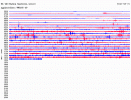
THR3 (Kammeni) and THR5 (Kera) - 3 is in the middle and 5 to the left. Showing earthquakes and STILL showing the same signal despite wind variations.
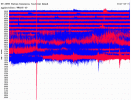
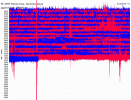
THR7 (Impis 315m / 1033ft) and THR8 (Monolithos 30m / 98ft) not showing the earthquakes as strongly but I think they are in there somewhere. Signal looks about the same as the last few days.
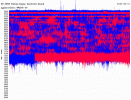
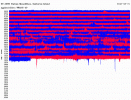
The ONLY earthquake being shown on the maps is a 2.1ML for yesterday, but there are several that can be seen on the seismos.
Hi StealthyKat,
The wind speed had dropped somewhat, but is not calm.
Speed / Dir
15 km/h / 4.1 m/s from ESE
Think of it by comparison to walking ot running - that is about 9.4 mph and you walk at between 3 and 4 mph and run at up to 17 or 18 mph (or more) so it is not exactly a strong wind.
Despite this fact the seismos are still showing all the signs and THR3 (caldera centre) and THR5 left hand side are showing some earthquakes hidden in the mass of red and blue! These are not showing on seismos further out so are local.
SANT - Showing 'fuzz' that may be wind in view of it's elevation (540m / 1,771ft)

THR3 (Kammeni) and THR5 (Kera) - 3 is in the middle and 5 to the left. Showing earthquakes and STILL showing the same signal despite wind variations.


THR7 (Impis 315m / 1033ft) and THR8 (Monolithos 30m / 98ft) not showing the earthquakes as strongly but I think they are in there somewhere. Signal looks about the same as the last few days.


The ONLY earthquake being shown on the maps is a 2.1ML for yesterday, but there are several that can be seen on the seismos.
reply to post by angelchemuel
[url=https://en.wikipedia.org/wiki/Kolumbo_%28volcano%29]Source: The ubiquitous
With a summit only 60ft below the surface would this possibly be the source of the signals and the dead fish?
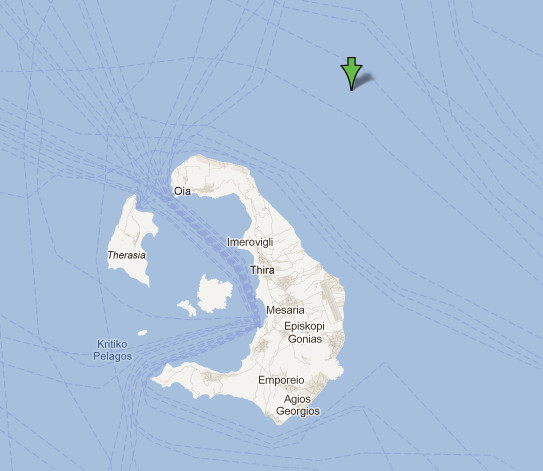
More research needed. Wiki says last eruption 1650 yet calls it active. The Smithsonian (GVP search) says:
eh? GVP has nothing on it?
Reading on in Wiki:
So if we do have an active volcanic area just to the north of Santorini island it gives much more weight to the uplift within the Santorini caldera I believe.
Kolumbo is an active submarine volcano in the Aegean Sea, about 8 km northeast of Cape Kolumbo, Santorini island. The largest of a line of about twenty submarine volcanic cones extending to the northeast from Santorini,[1] it is about 3 km in diameter with a crater 1.5 km across.[2] It was "discovered" when it breached the sea surface in 1649-50
[url=https://en.wikipedia.org/wiki/Kolumbo_%28volcano%29]Source: The ubiquitous
With a summit only 60ft below the surface would this possibly be the source of the signals and the dead fish?

More research needed. Wiki says last eruption 1650 yet calls it active. The Smithsonian (GVP search) says:
The Global Volcanism Program Holocene volcano database contains no names that match your search criteria. You may want to do a more detailed Name Search, or list all volcanoes that start with K.
eh? GVP has nothing on it?
Reading on in Wiki:
The crater floor, averaging about 505 m below the sea surface, is marked in its northeast area by a field of hydrothermal vents and covered by a thick bacterial community, the 2006 NOAA expedition discovered. Superheated (measured as hot as 224°C) metal-enriched water issuing from the vents has built chimneys of polymetallic sulfide/sulfates to a maximum height of 4 m, apparently accumulated since the 1650 event.
So if we do have an active volcanic area just to the north of Santorini island it gives much more weight to the uplift within the Santorini caldera I believe.
reply to post by Olivine
This seismo is showing boats I think and an event is going on right now.
bbnet.gein.noa.gr...
This one is close to the sea.
I have created a page with live thumbnails of ALL the seismos on the island(s)
This seismo is showing boats I think and an event is going on right now.
bbnet.gein.noa.gr...
This one is close to the sea.
I have created a page with live thumbnails of ALL the seismos on the island(s)
update to post by PuterMan
Wikipedia: Kolumbo undersea volcano
Sorry about that. Don't know what happened there. Brain fart I guess.
Wikipedia: Kolumbo undersea volcano
Sorry about that. Don't know what happened there. Brain fart I guess.
Originally posted by PuterMan
reply to post by angelchemuel
Kolumbo is an active submarine volcano in the Aegean Sea, about 8 km northeast of Cape Kolumbo, Santorini island. The largest of a line of about twenty submarine volcanic cones extending to the northeast from Santorini,[1] it is about 3 km in diameter with a crater 1.5 km across.[2] It was "discovered" when it breached the sea surface in 1649-50
[url=https://en.wikipedia.org/wiki/Kolumbo_%28volcano%29]Source: The ubiquitous
With a summit only 60ft below the surface would this possibly be the source of the signals and the dead fish?

More research needed. Wiki says last eruption 1650 yet calls it active. The Smithsonian (GVP search) says:
The Global Volcanism Program Holocene volcano database contains no names that match your search criteria. You may want to do a more detailed Name Search, or list all volcanoes that start with K.
eh? GVP has nothing on it?
Reading on in Wiki:
The crater floor, averaging about 505 m below the sea surface, is marked in its northeast area by a field of hydrothermal vents and covered by a thick bacterial community, the 2006 NOAA expedition discovered. Superheated (measured as hot as 224°C) metal-enriched water issuing from the vents has built chimneys of polymetallic sulfide/sulfates to a maximum height of 4 m, apparently accumulated since the 1650 event.
So if we do have an active volcanic area just to the north of Santorini island it gives much more weight to the uplift within the Santorini caldera I believe.
Yup, that's the area the Neptune submarine thingymebob was heading for just before el hierro started. Haven't had time to locate the Santorini thread on here yet....been lovely day for tending my 500+ lettuce instead!
Rainbows
Jane
PS..thank you for my thousand stars.....wow! I may not understand all your seismo talk all of the time..but you know how I love my volcanoes!
edit on 21-5-2012 by angelchemuel because: PS
reply to post by angelchemuel
Here is the NOAA page for the Kolumbo submarine crater. The neat little map to the crater has a link below it to download a whopping ~10MB image. Very yummy!
This page details the expedition
There is also a neat map showing the relationship of the positions of various parts
500+ lettuce? What can a gal do with so many?
Here is the NOAA page for the Kolumbo submarine crater. The neat little map to the crater has a link below it to download a whopping ~10MB image. Very yummy!
This page details the expedition
There is also a neat map showing the relationship of the positions of various parts
500+ lettuce? What can a gal do with so many?
edit on 21/5/2012 by PuterMan because: (no reason given)
Weather this morning is calmer - 13km/hr wind. The seismos look much the same.
SAP1 has some weird signals starting just before 0900 UTC which look man made. The Bulgarian quake is showing well on the 3 BUD plots at the bottom of the page.
The Bulgarian signal also shows on most of the other seismograms and may be an indication that these are turned up way too sensitive for display purposes. That may mean that they get a better 'view' with the appropriate filters applied to the original signals. Even if that was the case this still means there is quite a bit of activity in the area.
I do think that THT1 Athinios Temporary (Pelekanos) Station is probably being affected by boats. This location probably is not the brightest idea.
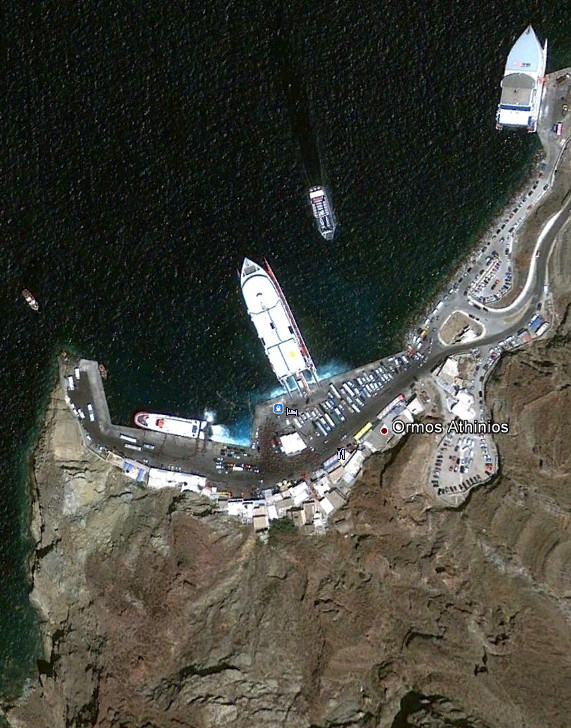
SAP1 has some weird signals starting just before 0900 UTC which look man made. The Bulgarian quake is showing well on the 3 BUD plots at the bottom of the page.
The Bulgarian signal also shows on most of the other seismograms and may be an indication that these are turned up way too sensitive for display purposes. That may mean that they get a better 'view' with the appropriate filters applied to the original signals. Even if that was the case this still means there is quite a bit of activity in the area.
I do think that THT1 Athinios Temporary (Pelekanos) Station is probably being affected by boats. This location probably is not the brightest idea.

Data effectively suggest volcanic tremors, same pattern we saw during the El Hierro eruption, so probably an eruption down there that hasn't reach
the surface.
on a side note.
Keeping an eye today on YML (Mary Lake) seismograph today.
on a side note.
Keeping an eye today on YML (Mary Lake) seismograph today.
reply to post by PuterMan
"old caldera" is not where it would head,,obviously,, it would be, well sealed, and hardened.
magma, and ejecta,,
as in water,, even with the littlest pressure,, cannot be soldered,,,,,
old caldera,,nope,,somewhere else.
"old caldera" is not where it would head,,obviously,, it would be, well sealed, and hardened.
magma, and ejecta,,
as in water,, even with the littlest pressure,, cannot be soldered,,,,,
old caldera,,nope,,somewhere else.
reply to post by BobAthome
Why would it be well sealed and hardened. If you look at virtually every other caldera in the world you get dome or cone building in the centre of the caldera area.
It is happening here at Santorini and it happens at Toba and Anak Krakatoa to name just two. If there is going to be uplift then the most likely place is going to be in the caldera.
Where several calderas overlap as at Santorini, the point is that they do overlap and are not somewhere completely separate.
"old caldera" is not where it would head,,obviously,, it would be, well sealed, and hardened.
magma, and ejecta,,
as in water,, even with the littlest pressure,, cannot be soldered,,,,,
old caldera,,nope,,somewhere else.
Why would it be well sealed and hardened. If you look at virtually every other caldera in the world you get dome or cone building in the centre of the caldera area.
It is happening here at Santorini and it happens at Toba and Anak Krakatoa to name just two. If there is going to be uplift then the most likely place is going to be in the caldera.
Where several calderas overlap as at Santorini, the point is that they do overlap and are not somewhere completely separate.
reply to post by PuterMan
This is so interesting PM! So....have you come to any conclusions as to what it is? Are you leaning more toward boats, wind or made made....or do you think it is an impending eruption....or all of the above?
This is so interesting PM! So....have you come to any conclusions as to what it is? Are you leaning more toward boats, wind or made made....or do you think it is an impending eruption....or all of the above?
Greets PuterMan and thanks for the very informative posts! (don't you get annoyed by hearing that already? )
I have a question and it will be pretty much put in laymen's terms because I'm the exact opposite of an expert in your field.
Short and simple, do you think that there might be a connection between the 6.0 EQ in Italy, the 5.8 EQ here in Bulgaria and the data you are trying to filter out (damn winds) regarding Santorini? And if yes, what might be the implications?
We rarely get strong EQs with epicenter here in Bulgaria and that 5.8 shook us pretty hard and came out of nowhere.
So, in layman's terms, what the heck is going on and am I being too paranoid by connecting these dots?
I have a question and it will be pretty much put in laymen's terms because I'm the exact opposite of an expert in your field.
Short and simple, do you think that there might be a connection between the 6.0 EQ in Italy, the 5.8 EQ here in Bulgaria and the data you are trying to filter out (damn winds) regarding Santorini? And if yes, what might be the implications?
We rarely get strong EQs with epicenter here in Bulgaria and that 5.8 shook us pretty hard and came out of nowhere.
So, in layman's terms, what the heck is going on and am I being too paranoid by connecting these dots?
reply to post by ch1n1t0
So sorry for the delay in replying, I have been a bit busy. Life unfortunately has a habit of getting in the way of ATS
Personally I don't see a connection directly. Santorini is volcanic origins whereas the Italian quake could be considered as intra-plate although some would have it otherwise. The same could be said about the Bulgarian quakes.
The African plate is pushing against the European plate, bearing in mind that the men in white coats say Africa is stable AND the plate is changing from subducting to riding over the European plate, but these shallow quakes so far from the subduction zone in both cases are sort of outliers of the main events. These are outside the area which can be shown as having progressively deeper quakes therefore as far as I can say these are almost intraplate. The weirdness up north of Bucharest interests me (see the second image). A circular bunch of deep quakes - very odd
Bulgaria is not likely to have a big one really and this image shows the number of Mag 7+ since 1900, which is basically one. Bulgaria has a very complex geology and the region has been highly folded in the past.
There are a number of smaller ones and the deep layer I mentioned can be seen at the bottom of this map - as a row of green dots. This demarcates the plate going down theoretically. As you can see that is some way from Bulgaria.
So sorry for the delay in replying, I have been a bit busy. Life unfortunately has a habit of getting in the way of ATS
Personally I don't see a connection directly. Santorini is volcanic origins whereas the Italian quake could be considered as intra-plate although some would have it otherwise. The same could be said about the Bulgarian quakes.
The African plate is pushing against the European plate, bearing in mind that the men in white coats say Africa is stable AND the plate is changing from subducting to riding over the European plate, but these shallow quakes so far from the subduction zone in both cases are sort of outliers of the main events. These are outside the area which can be shown as having progressively deeper quakes therefore as far as I can say these are almost intraplate. The weirdness up north of Bucharest interests me (see the second image). A circular bunch of deep quakes - very odd
Bulgaria is not likely to have a big one really and this image shows the number of Mag 7+ since 1900, which is basically one. Bulgaria has a very complex geology and the region has been highly folded in the past.
There are a number of smaller ones and the deep layer I mentioned can be seen at the bottom of this map - as a row of green dots. This demarcates the plate going down theoretically. As you can see that is some way from Bulgaria.
reply to post by StealthyKat
Hi StealthyKat. Yes basically the seismos don't seem to change much so I guess we need not be concerned as this appears to be 'normal'.
I will be posting some images of the positions of these seismos later but basically they are located in towns, one in a sewage works, one right beside the runway etc so not what i would call the best locations!!
Hi StealthyKat. Yes basically the seismos don't seem to change much so I guess we need not be concerned as this appears to be 'normal'.
I will be posting some images of the positions of these seismos later but basically they are located in towns, one in a sewage works, one right beside the runway etc so not what i would call the best locations!!
reply to post by PuterMan
Thanks for the info! Off topic but I recorded some video from Yellowstone today that I thought you might like. It's just normal activity, but the shot just looked so cool, I recorded it......kind of ominous looking Enjoy! Oh....and watch full screen to REALLY see it best. BTW.....I have my recorder ready and I watch many volcano cams, so if anything happens with this volcano, maybe I will catch it for you
Thanks for the info! Off topic but I recorded some video from Yellowstone today that I thought you might like. It's just normal activity, but the shot just looked so cool, I recorded it......kind of ominous looking Enjoy! Oh....and watch full screen to REALLY see it best. BTW.....I have my recorder ready and I watch many volcano cams, so if anything happens with this volcano, maybe I will catch it for you
edit on 5/27/2012 by StealthyKat because: (no reason given)
new topics
-
Those Great Fresh Pet Commercials
Television: 3 hours ago -
S.C. Jack Smith's Final Report Says Trump Leads a Major Conspiratorial Criminal Organization!.
Political Conspiracies: 5 hours ago -
Advice for any young Adult .
General Chit Chat: 6 hours ago -
Joe meant what he said about Hunter's pardon....
US Political Madness: 6 hours ago -
Regent Street in #London has been evacuated due to a “bomb threat.”
Other Current Events: 7 hours ago -
It’s Falling…
Philosophy and Metaphysics: 9 hours ago
top topics
-
Steering the Titantic from the Drydock.
Rant: 12 hours ago, 10 flags -
Joe meant what he said about Hunter's pardon....
US Political Madness: 6 hours ago, 10 flags -
Advice for any young Adult .
General Chit Chat: 6 hours ago, 8 flags -
S.C. Jack Smith's Final Report Says Trump Leads a Major Conspiratorial Criminal Organization!.
Political Conspiracies: 5 hours ago, 8 flags -
It’s Falling…
Philosophy and Metaphysics: 9 hours ago, 4 flags -
Regent Street in #London has been evacuated due to a “bomb threat.”
Other Current Events: 7 hours ago, 3 flags -
Those Great Fresh Pet Commercials
Television: 3 hours ago, 2 flags
active topics
-
Those Great Fresh Pet Commercials
Television • 3 • : nerbot -
Los Angeles brush fires latest: 2 blazes threaten structures, prompt evacuations
Mainstream News • 54 • : GENERAL EYES -
S.C. Jack Smith's Final Report Says Trump Leads a Major Conspiratorial Criminal Organization!.
Political Conspiracies • 28 • : TzarChasm -
House Passes Laken Riley Act
Mainstream News • 20 • : matafuchs -
Remember These Attacks When President Trump 2.0 Retribution-Justice Commences.
2024 Elections • 140 • : matafuchs -
What Comes After January 20th
Mainstream News • 27 • : NoCorruptionAllowed -
Claim: General Mark Milley Approved Heat and Sound Directed Energy Weapons During 2020 Riots
Whistle Blowers and Leaked Documents • 30 • : BeyondKnowledge3 -
Post A Funny (T&C Friendly) Pic Part IV: The LOL awakens!
General Chit Chat • 8004 • : KrustyKrab -
Planned Civil War In Britain May Be Triggered Soon
Social Issues and Civil Unrest • 18 • : AdultMaleHumanUK -
Advice for any young Adult .
General Chit Chat • 12 • : grey580
